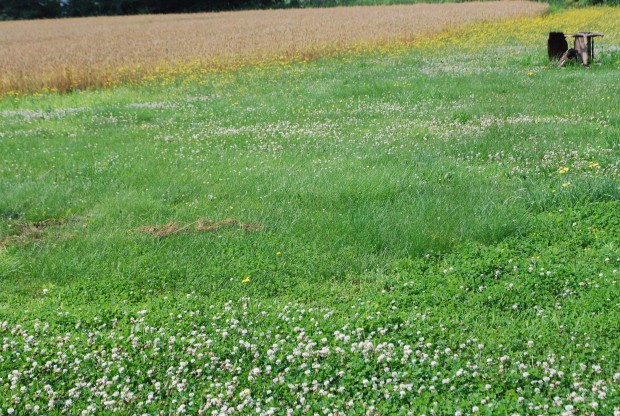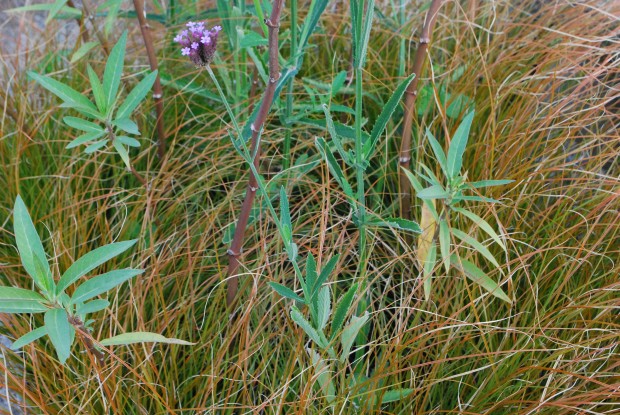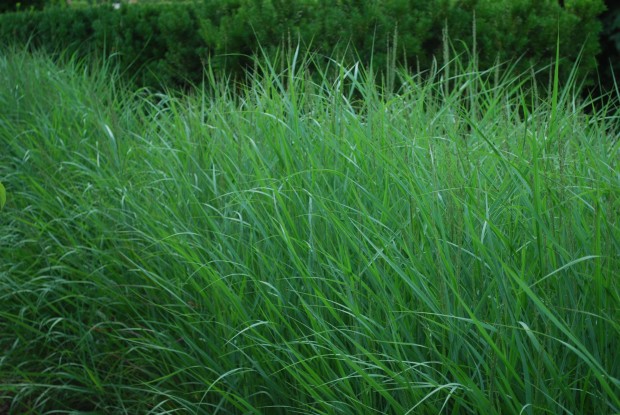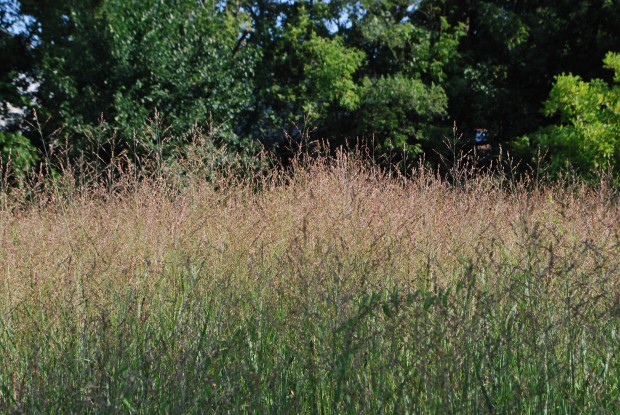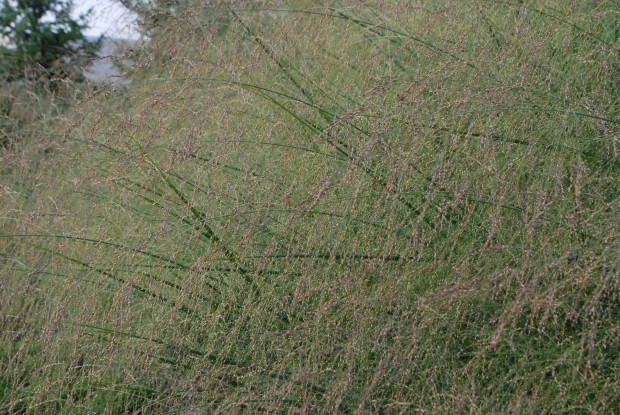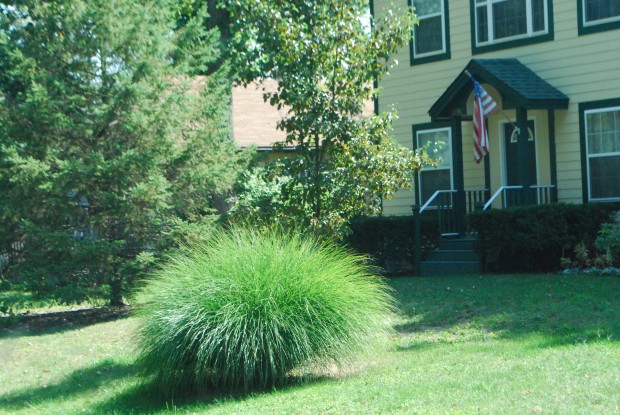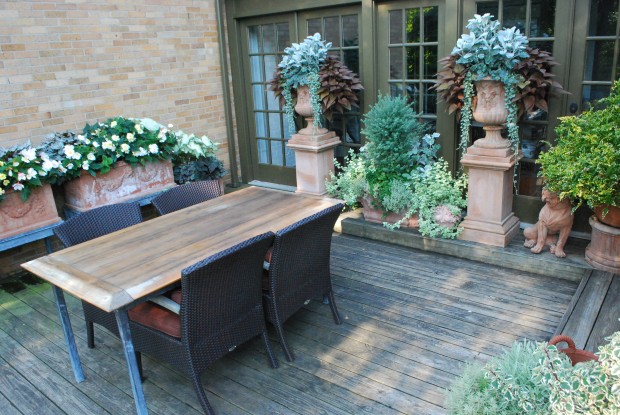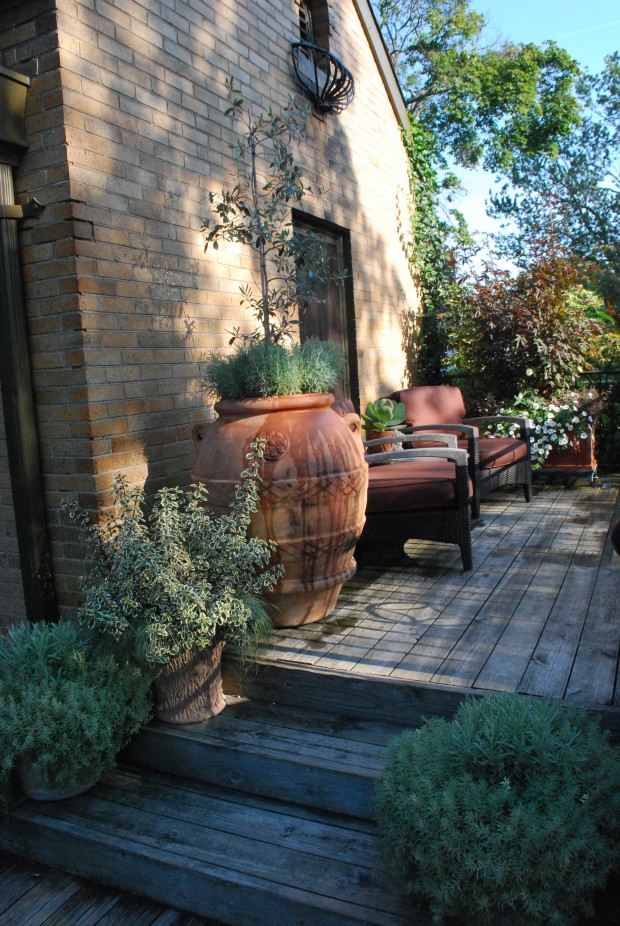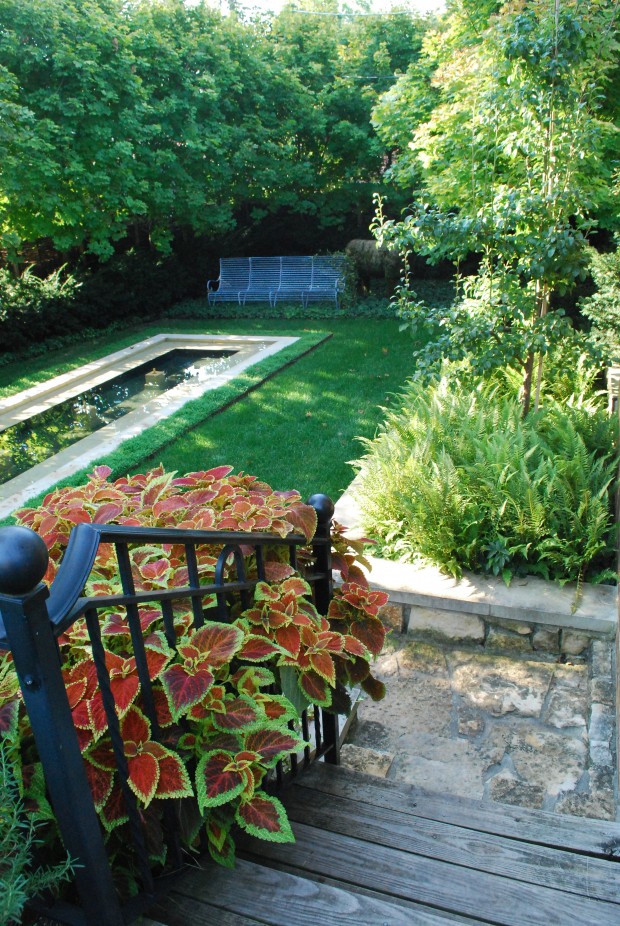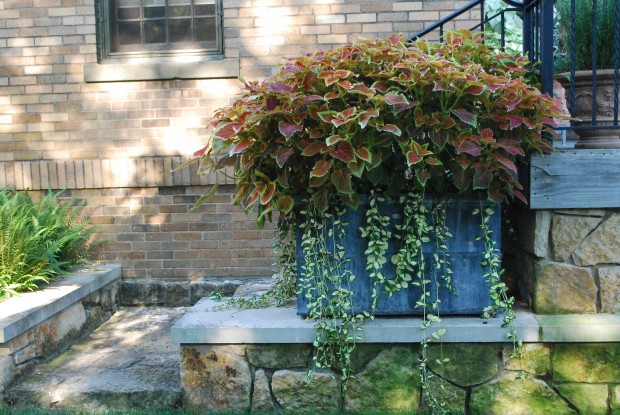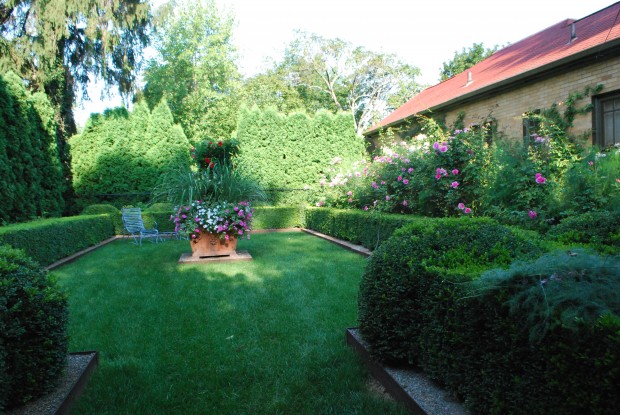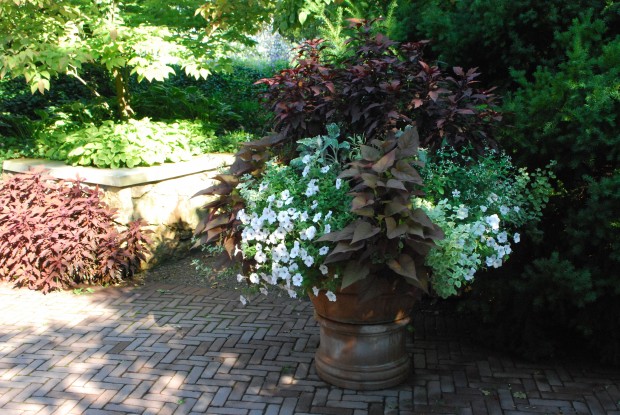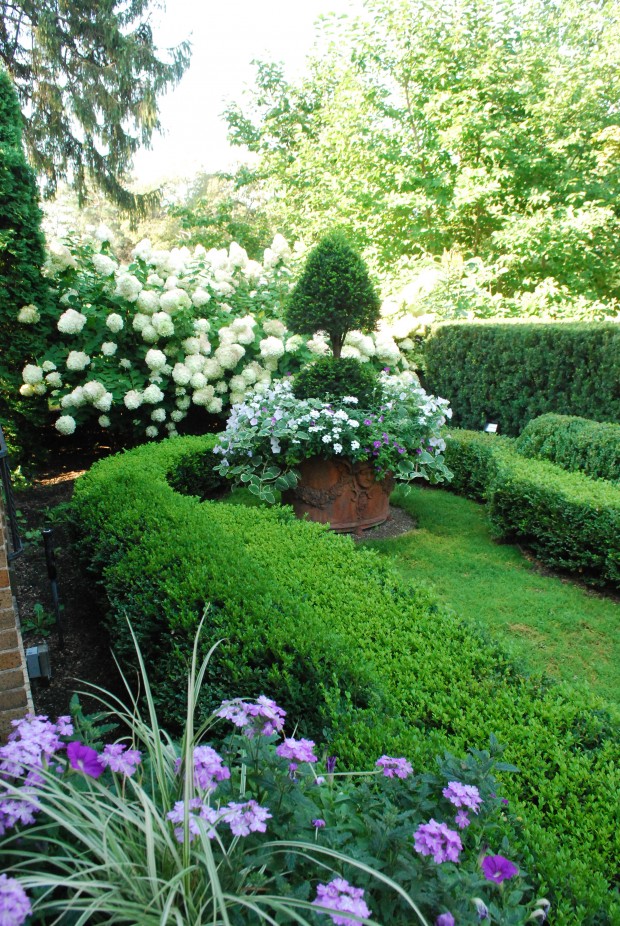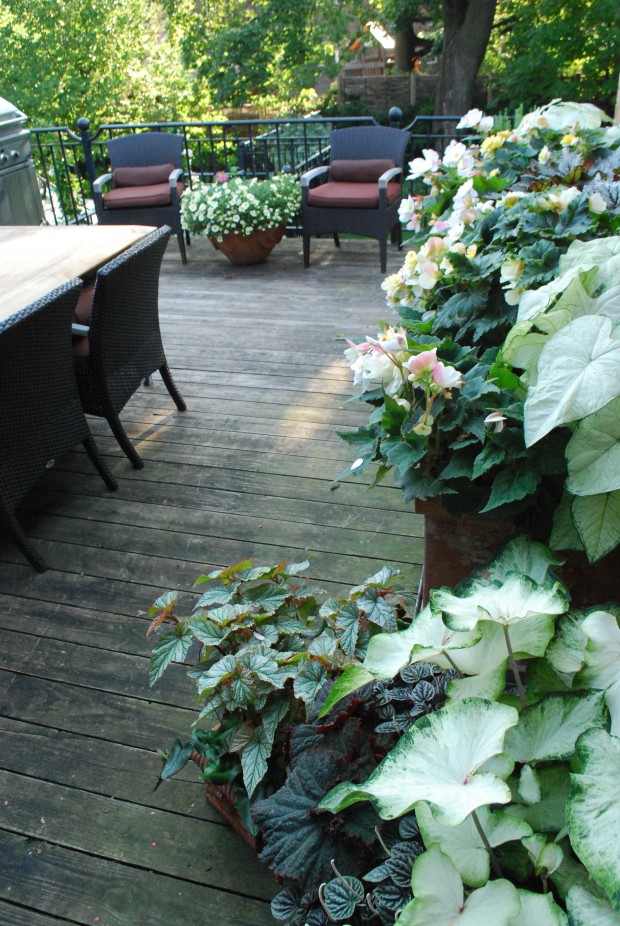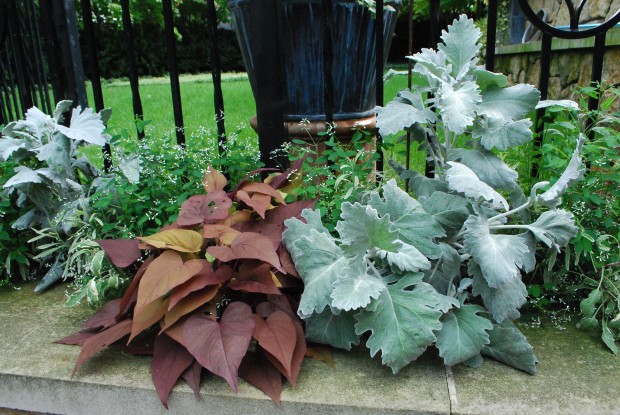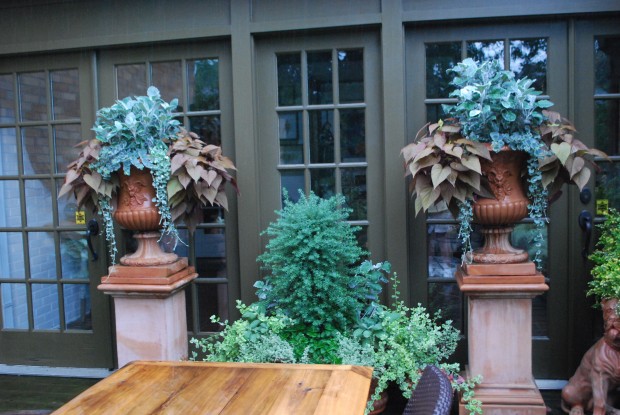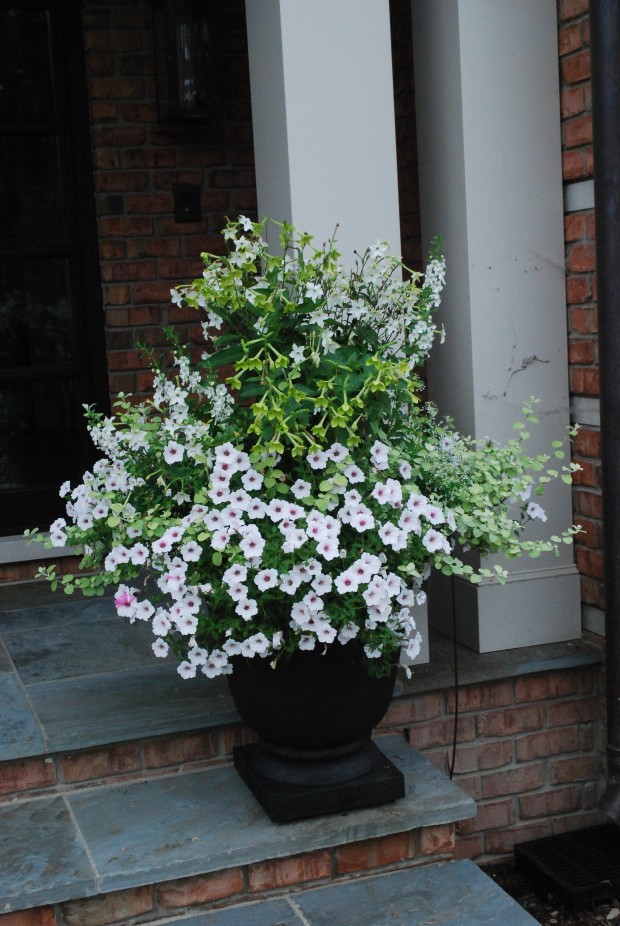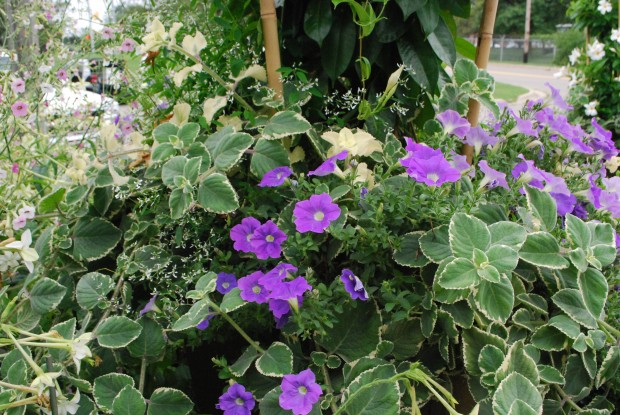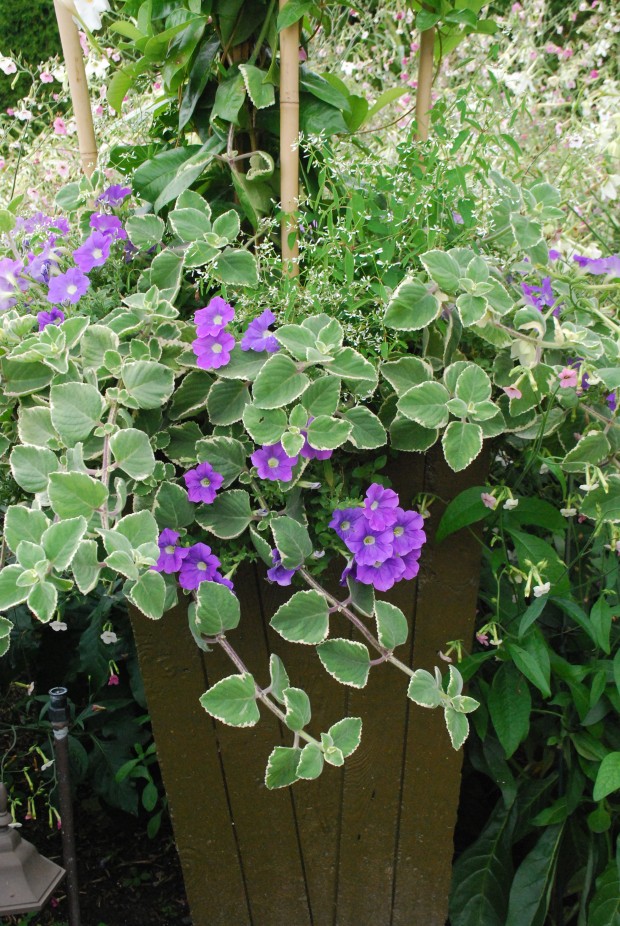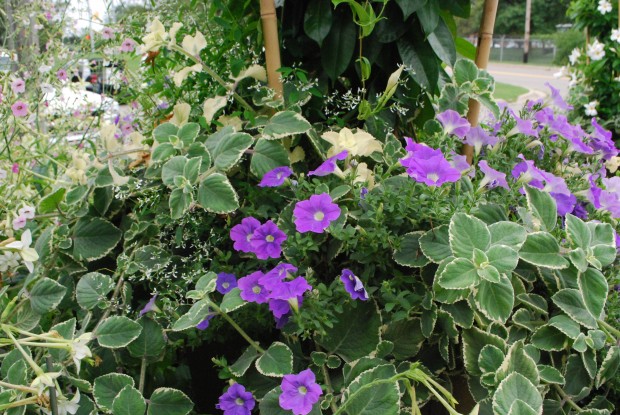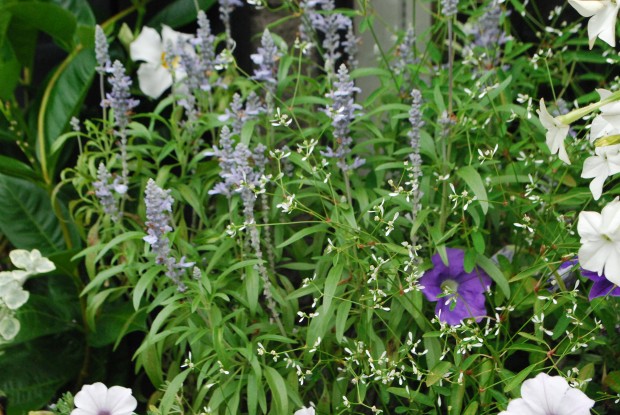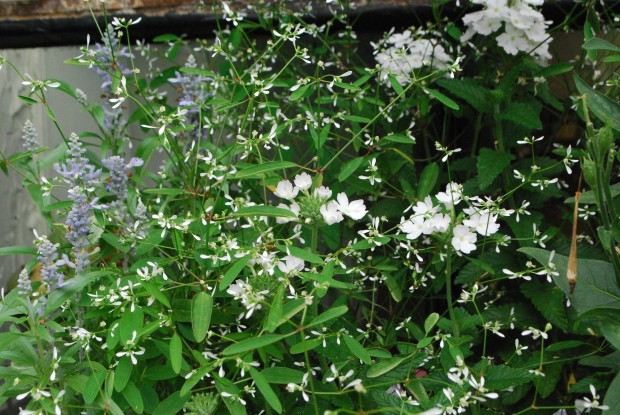Lawn grasses and short growing green plants that spread and blanket that ground-love them. I like how restful their uniform surface is to the eye. I like how they hug and describe the sculpture of the ground beneath them. They make a fine surface on which to play croquet or throw the ball to the dogs. Grass makes a cool cushiony spot for a brief respite on a summer afternoon. Lawn grasses are willing, and grow vigorously. They genially put up with any interloper. I do nothing to mine beyond a weekly cut. If your cut grass is weedy, fine. Just take the trouble to water it. Low and green is presentable. The uncut, the freely flowing and growing version of grass-we know them as ornamental grasses. They look so great, come the beginning of September.
I like grass-in all of its forms. I like it cut short, a beautifully textured skin over the ground. Beautifully or intricately sculpted ground benefits from a covered of cut grass. I like small growing grasses in containers. Their insouciant habit is a breath of fresh air. Big growing grasses speak strongly to free.
Ornamental grasses are slow to emerge from the ground in my spring. Eventually they begin to grow. Eventually they may attain great height and mass. Their individually thin blades are a celebration of that natural phenomena we call wind. Grasses move. A big wind in any field of uncut grass makes for a concert. A spring with adequate water endows every blade of grass with that delicious green color. You know-grass green. This picture-panicum virgatum-or panic grass. The common name I am sure refers to the fact that it moves in the slightest breeze. Free to move-how good this feels.
The panic grass in the previous picture matures like this- given the beginning of September. Individual plants go to seed. Each plant throws multiple seed heads, which mature over the course of the fall. Each seed-a dot. The view of so many dots moving-rhythmic-mesmerizing. Some seeding grasses provide grain-food. What the grains from grasses do to feed people-extraordinary. The individual stalks sort out their needs for light and space-they successfully coexist. 
Miscanthus sinensis is a big growing crown growing grass that needs lots of room to represent. I see them most frequently in commercial plantings where they have every bit of the space they need to mature. The windswept summer foliage gains momentum in late summer. This large patch of miscanthus, no doubt from a single plant put in the ground years ago, is in its beautiful plumes stage.
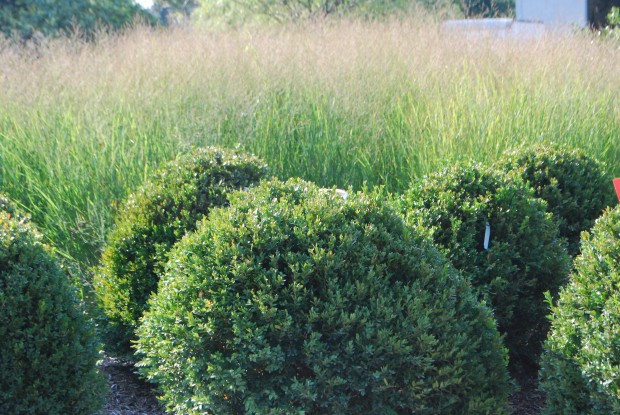
Grass blades are slender-wispy. Lots of grass blades in concert are sparkly-each blade catches the light in a different way. Thousands of blades catch the light and the wind differently. Ornamental grasses behind a planting of boxwood-everyone benefits. Should you have a mind to include grass in your landscape, site them where the late day sun will illuminate them. Give them lots and lots-and even more space. Face them down with an plant that makes their airy statement look all the more ethereal.
I do think that ornamental grasses recall and represent nature in its wild state. I do think that the term ornamental grasses is a misnomer. The grass primeval would be a more accurate description.. Grasss in all of its forms has a handsome heartiness that leavens the landscape.
Fiber optic grass is a very small and dense growing thatch of a grass. The name “fiber optic” is easy to understand-the 21st century is littered will all manner of various technologies. An enthusiastically growing small scale grass-how easy is this to like? Everything paired with it looks better.
We live in a very large country. The USA covers a vast amount of ground. We grow grain-grasses- in equally vast quantities. What does this mean to me, a gardener in charge of a very small urban lot? Plenty. My emotional attachment to ornamental grasses is considerable. I like the flow of them- the big gestures. I like anything graceful and natural. I like the music that is the wind. I especially like them planted in mass.
I took this picture outside a doctor’s office on a very busy 4 lane street just a few miles from my home. The grasses seeding were spectacular.
A patch of grass-most gardeners go for this. Every gardener interprets this patch differently. Some gardeners revere their lawn while all else in the landscape suffers. Odd this. I am just as likely to see a clump of ornamental grass in a perennial garden. I often see an interpretation of the waves of grain in commercial landscapes. This clump of miscanthus grass in the lawn-I cannot speak to the intent of this gardener. Do I need to? This freely representing patch of grass-simply beautiful.
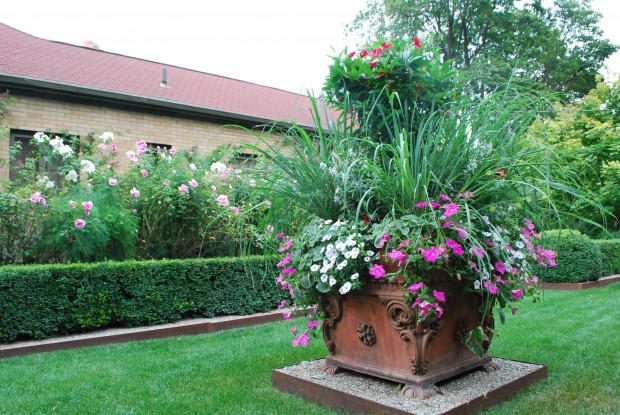
The lemon grass in my rose garden container is coming on strong. I have not touched this community in weeks. The voice so strong that is the grass-getting louder.
